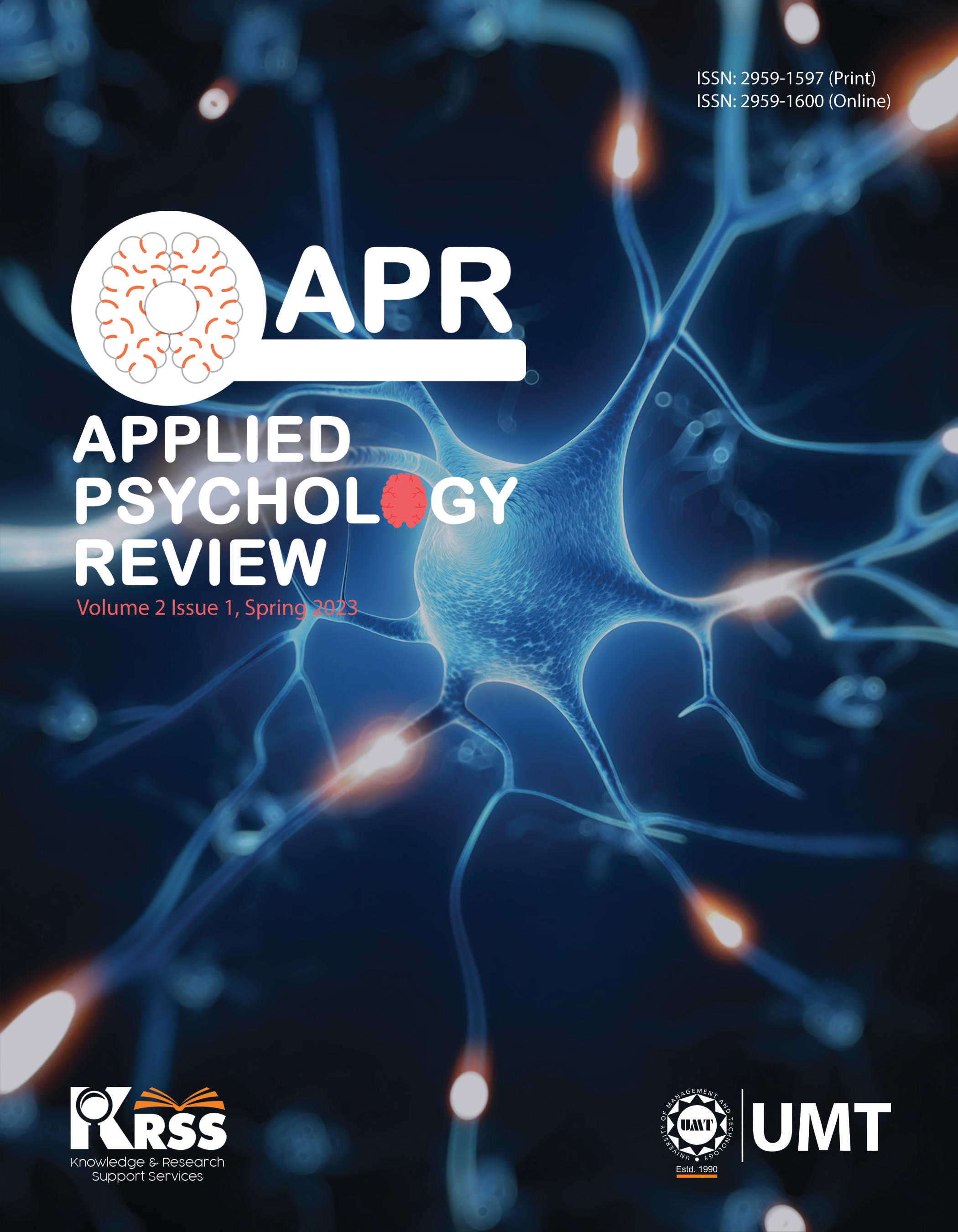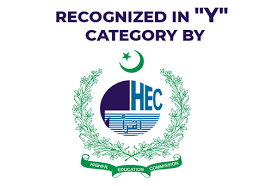Gender Barriers for Women in Construction of Cyber-Self: A Study in Pakistani Socio-Cultural Context
Abstract
 Abstract Views: 0
Abstract Views: 0
The spread of internet enhancing connectivity through various social media platforms has transformed the previous patterns of self-construction. The advent of the virtual world and digital culture has enabled individuals to be the creators and authors of their self or identity construction, especially in the digital world in contemporary society. In today's world, individuals’ personalities are divided into dualistic categories, the actual self-constructed through face-to-face interaction in the real world and the cyber-self which one has constructed through online interaction with people in the virtual world. In this study, the researchers tried to discover how men and women are inversely forming their digital or cyber selves in a male-dominated society and whether are they facing any specific coercion, threats, pros, and advantages because of their particular gender. Under the interpretive approach the researcher opted for qualitative research methodology and interviewed 20 individuals, with age ranged between 25 to 30 years, having virtual existence for the last ten years. The research findings indicated that women have to face similar barriers to the actual culture in the digital culture too. While constructing their cyber-self, women have to face discrimination just because of their gender by their male family members particularly.
Downloads
References
Abbasi, A., & Chen, H. (2008). Writeprints: A stylometric approach to identity-level identification and similarity detection in cyberspace. ACM Transactions on Information Systems, 26(2), 1-29. https://doi.org/10.1145/1344411.1344413
Aboujaoude, E., Savage, M. W., Starcevic, V., & Salame, W. O. (2015). Cyberbullying: Review of an old problem gone viral. The Journal of adolescent health: Official publication of the Society for Adolescent Medicine, 57(1), 10–18. https://doi.org/10.1016/j.jadohealth.2015.04.011
Ali, W., Fani, M. I., Afzal, S., & Yasin, G. (2010). Cultural barriers in women empowerment: A sociological analysis of Multan, Pakistan. European Journal of Social Sciences, 18(1), 147-155.
Alvesson, M., & Billing, Y. D. (2002). Beyond body-counting: A discussion of the social construction of gender at work. In Gender, identity and the culture of organizations (1st ed., pp. 86-105). Routledge.
Ashley, M. (2003). Primary school boys' identity formation and the male role model: An exploration of sexual identity and gender identity in the UK through attachment theory. Sex Education, 3(3), 257-270. http://dx.doi.org/10.1080/1468181032000119131
Bamman, D., Eisenstein, J., & Schnoebelen, T. (2014). Gender identity and lexical variation in social media. Journal of Sociolinguistics, 18(2), 135-160. https://doi.org/10.1111/josl.12080
Best, D. L., & Puzio, A. R. (2019). Gender and culture. In D. Matsumoto & H. C. Hwang (Eds.), The handbook of culture and psychology (pp. 235–291). Oxford University Press. https://doi.org/10.1093/oso/9780190679743.003.0009
Fowler, C. (2013). Identities in transformation: Identities, funerary rites, and the mortuary process. In S. Tarlow & L. Nilsson Stutz (Eds.), The Oxford handbook of the archaeology of death and burial. Oxford University Press.
Gündüz, U. (2017). The effect of social media on identity construction. Mediterranean Journal of Social Sciences, 8(5). http://dx.doi.org/10.1515/mjss-2017-0026
Hassan, B., Vignoles, V. L., & Schwartz, S. J. (n.d). Reconciling social norms with personal interests: Indigenous styles of identity formation among Pakistani youth. https://core.ac.uk/download/pdf/145642962.pdf
Kleemans, M., Daalmans, S., Carbaat, I., & Anschütz, D. (2018). Picture perfect: The direct effect of manipulated Instagram photos on body image in adolescent girls. Media Psychology, 21(1), 93–110. https://doi.org/10.1080/15213269.2016.1257392
Lister, M. (2013). The photographic image in digital culture (2nd ed.). Routledge.
Mayfield, A. (2006). What is social media? http://www.spannerworks.com/fileadmin/uploads/eBooks/What_is_social_media_Nov_2007.pdf
Moradi, B., & Parent, M. C. (2013). Assessment of gender-related traits, attitudes, roles, norms, identity, and experiences. In K. F. Geisinger, B. A. Bracken, J. F. Carlson, J.-I. C. Hansen, N. R. Kuncel, S. P. Reise, & M. C. Rodriguez (Eds.), APA handbook of testing and assessment in psychology, Vol. 2. Testing and assessment in clinical and counseling psychology (pp. 467–488). American Psychological Association. https://doi.org/10.1037/14048-027
Reuter, C., & Kaufhold, M-A. (2017). Fifteen years of social media in emergencies: A retrospective review and future directions for crisis informatics. Journal of Contingencies and Crisis Management, 26(4). http://dx.doi.org/10.1111/1468-5973.12196
Sandhu, D., & Tung, S. (2006). Gender differences in adolescent identity formation. Pakistan Journal of Psychological Research, 21(1-2), 29–40.
Thumim, N. (2012). Self-representation and digital culture. Springer.
Vannini, P. (Ed.) (2009). Material culture and technology in everyday life: Ethnographic approaches (Intersections in Communications and Culture)(1st ed.). Peter Lang Inc.
Villora, B., Yubero, S., & Navarro, R. (2019). Associations between feminine gender norms and cyber dating abuse in female adults. Behavioral Sciences, 9(4), 35. https://doi.org/10.3390/bs9040035
Wan, C., Chiu, C-Y., Peng, S., & Tam, K-P. (2007). Measuring cultures through intersubjective cultural norms: Implications for predicting relative identification with two or more cultures. Journal of Cross-Cultural Psychology, 38(2), 213-226. https://doi.org/10.1177/0022022106297300
Wartella, E. (1991). Mass communication and persuasion: The evolution of direct effects, limited effects, information processing, and affect and arousal models. In Persuasive communication and drug abuse prevention (pp. 53-70). Routledge.
Yeung, K-T., & Martin, J. L. (2003). The looking glass self: An empirical test and elaboration. Social Forces, 81(3), 843-879. http://dx.doi.org/10.1353/sof.2003.0048
Copyright (c) 2023 Nayab Saman , Farooq e Azam, Bushra Ali

This work is licensed under a Creative Commons Attribution 4.0 International License.




